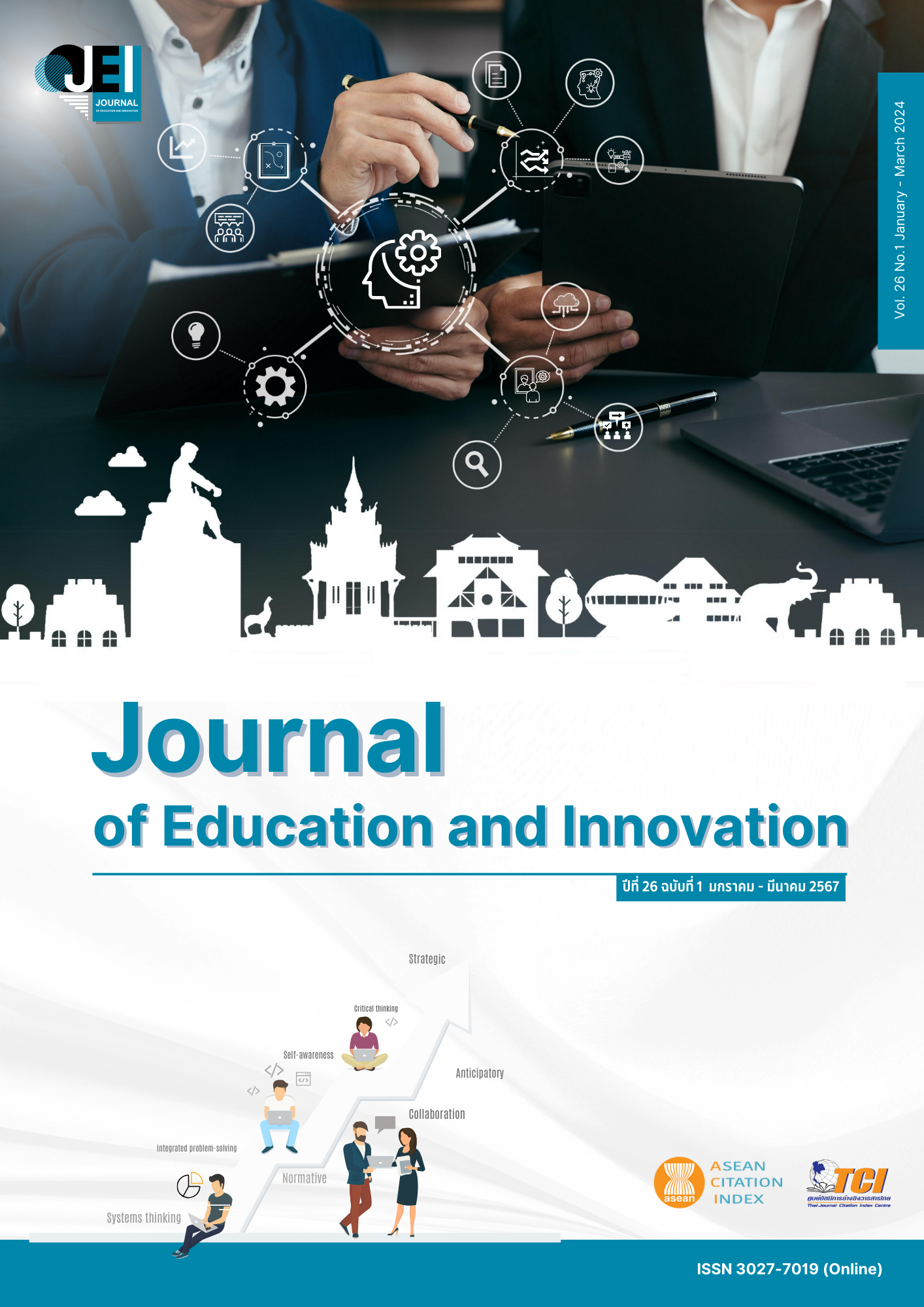THE RESULTS OF USING THE LEARNING ACTIVITY PLAN BY USING A 5-STEP LADDER-STYLE LEARNING ACTIVITY, THE VOCATIONAL COURSEWORK 1 OF MATHAYOMSUKSA 1 STUDENTS
Main Article Content
Abstract
The purposes of this research were to 1) compare students’ analytical thinking skills between pre-learning and post-learning by through 5- Steps for Mattayomsuksa 1 students, 2) compare students’ career achievement between pre-learning and post-learning by through 5-Steps for Mattayomsuksa 1 students, and 3) study Mathayomsuksa 1 students’ satisfaction through 5-Steps learning management. The research sample were 30 students who were studying Mathayomsulsa 1 at Buengkan School, Buengkan Province. The research method was randomly selected group of students. The method of this research was five steps of learning management by studying during career 1 subject of students who were studying Mathayomsuksa 1, with 8 plan, 19 hours and evaluated studying result. There were 30 questions with four multiple choices; part one was asking about thinking and analytical skills and part two was two open-end questions asking about students’ satisfaction towards learning activities through 5-steps. The multiple choices were 5 rating scale, 18 questions. This research was analyzed by using percentage, average, standard deviation and hypothesis testing by t-test (Dependent Samples). The results of the study were as follows:
1. The students’ post analytical thinking skills through 5-Steps ladder-style learning activities have a higher than pre learning at the 0.05 of significance.
2. The students’ post learning achievement through ladder-style learning activities have a higher than pre learning at the 0.05 of significance.
3. Mattayomsuksa 1 students’ satisfaction learnt through 5-Steps learning management was at good level range ( = 4.25).
Article Details

This work is licensed under a Creative Commons Attribution-NonCommercial-NoDerivatives 4.0 International License.
The owner of the article does not copy or violate any of its copyright. If any copyright infringement occurs or prosecution, in any case, the Editorial Board is not involved in all the rights to the owner of the article to be performed.
References
Bloom, B. S. (1976). Human Characteristics and School Learning. New York: McGraw-HillBook Company.
Good, C. V. (1973). Dictionary of education. New York: Mc Graw-Hill.
Kulnatsiri, P. (2009). Substances that should be added and should be reduced, and ideas for organizing mathematics activities in The Reform Era. Bangkok: Institute for the Promotion of Teaching Science and Technology.
Meesri, R. (2011). Developing a series of learning activities that promote analytical thinking and interactive learning skills, biology and the environment for sixth grade students. Mae Hong Son: Rat Pracha Nukhro 22 School.
Ministry of Education. (2008). Basic Education Core Curriculum B.E. 2008. Bangkok: Teachers Council Printing House.
Panich, W. (2012). Methods of learning for students in the 21st century. Bangkok: Sodsri-Saritwong Foundation.
Poonakorn, P. (2012). Effects of using the five-step model on critical thinking of fifth grade students. Bangkok: Chulalongkorn University.
Saiyot, L., & Saiyot, A. (1996). Techniques for measuring learning outcomes. Bangkok: Srinakharinwirot University Prasarnmit.
Sinlarat, P. (2014). Grow according to the potential towards the 21st century of education. Bangkok: Chulalongkorn University Printing House.
Siriwat, L. (2006). Psychology in everyday life. Bangkok: Odeon Store.
Trirat, S. (2003). Teaching to promote critical thinking skills. Journal Education, 1(1), 26-37.
Vygotsky, L. S. (1996). Obras Escogidas. Tomo IV. Madri: Visor.


